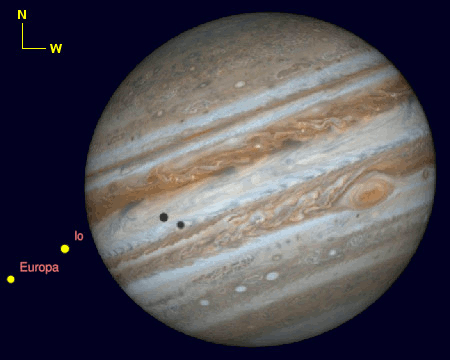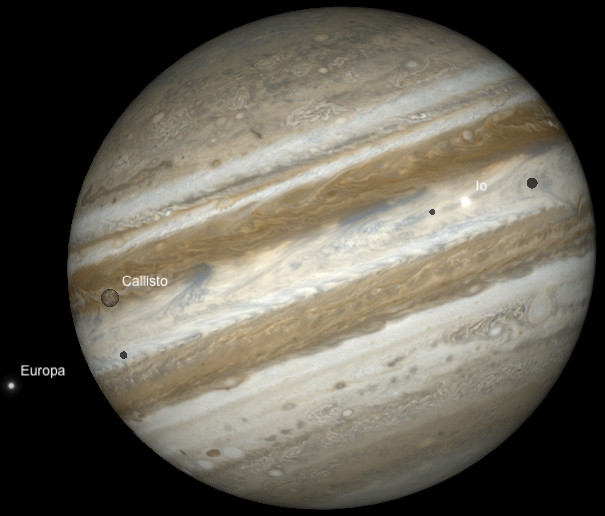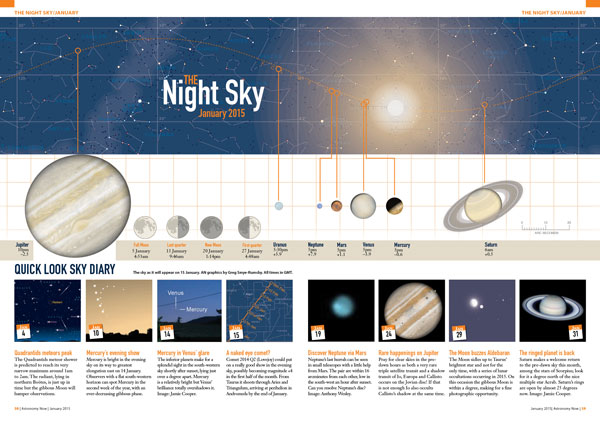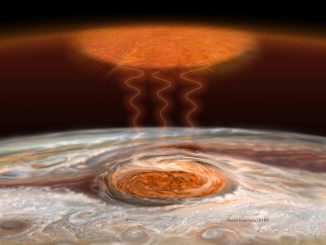
These mutual events occur between now and August 2015, so given that Jupiter is rising to the east-northeast in the British Isles early in the evening (obtain the precise times from our Almanac), the planet is high enough above the horizon for the seeing conditions to be good enough to observe some of them at a comfortable hour. The table below lists events visible from the UK:
 Table notes: the events listed occur when Jupiter is approximately 20° or more above the horizon in the central British Isles. None of the eclipses in the table is total, so the eclipsed moons will not be totally immersed in shadow. Two of the occultations are total — Europa by Ganymede on the 19th and 26th January.
Table notes: the events listed occur when Jupiter is approximately 20° or more above the horizon in the central British Isles. None of the eclipses in the table is total, so the eclipsed moons will not be totally immersed in shadow. Two of the occultations are total — Europa by Ganymede on the 19th and 26th January.
Multiple shadow transits
If you observe Jupiter at just the right time, the Great Red Spot may be on view. Or your eye may be drawn to a tiny, inky-black dot that seems to dissolve away in poor seeing, only to reappear a few seconds later. No, your eyes are not playing tricks — you’re witnessing the shadow of one (or more) of the four Galilean moons slowly drifting across the cloud tops of their parent planet.

Fortunately, a number of double transits occur this month that are visible from the British Isles. The times and circumstances of events occurring on the 2nd, 3rd, 4th, 10th, 11th, 17th, 24th and 27th are given by our online Almanac when the ‘Add phenomena of Jupiter?’ checkbox is ticked. Of particular significance is the unmissable (weather permitting) triple shadow transit of 24th January!
All illustrations above are based on computer simulations of the appearance of Jupiter and the configurations of the moon(s) casting the shadow(s). Note that the orientation is north up and west to the right; a refractor or catadioptric telescope with a star diagonal will be flipped east-west, while a Newtonian reflector user should invert the images to match their view.
Inside the magazine
Find out more about what’s up in the night sky in the January edition of Astronomy Now. Never miss an issue by subscribing to the UK’s biggest astronomy magazine. Also available for iPad/iPhone and Android devices.




